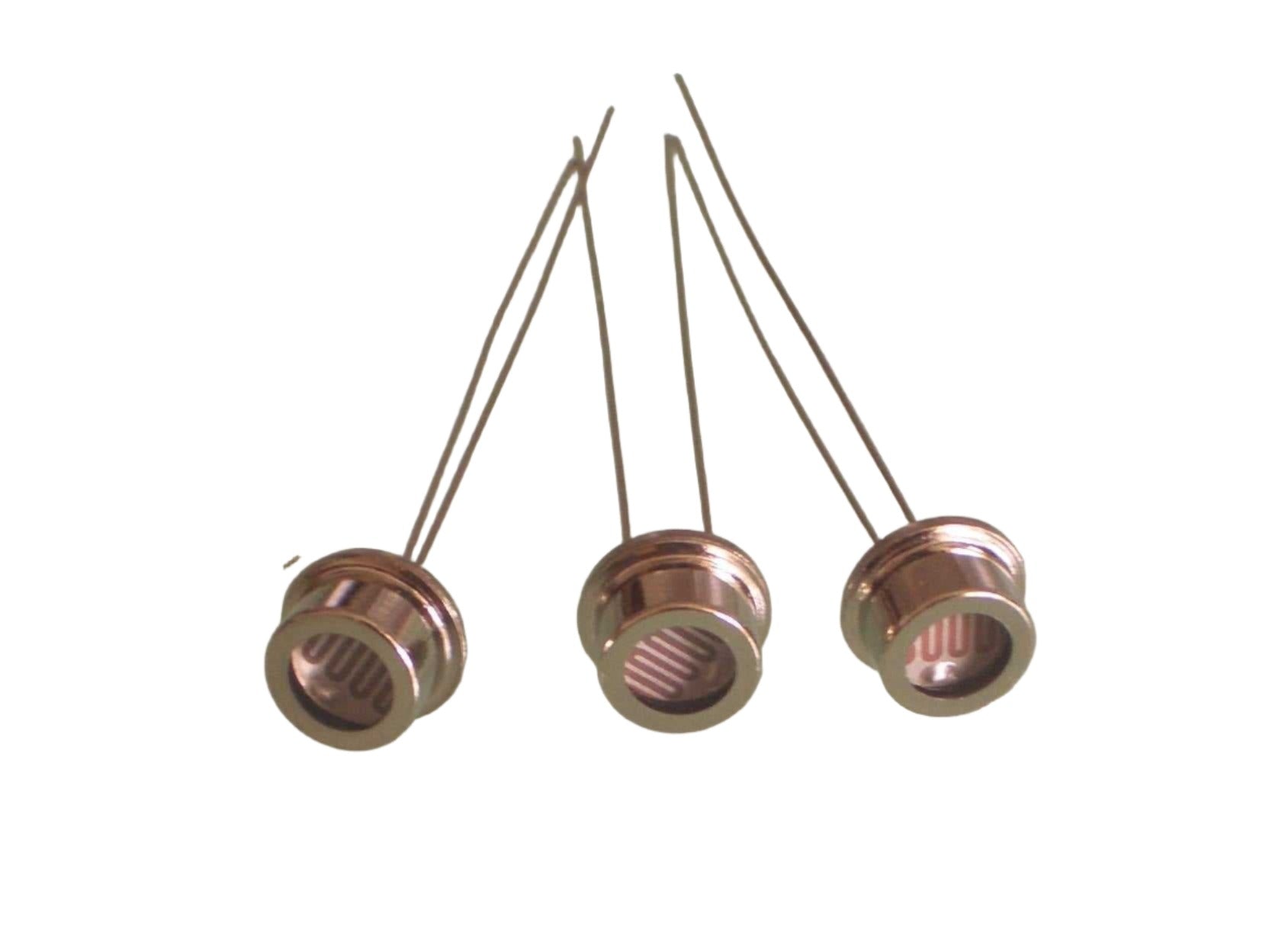What Are Photoresistors?
Photoresistors (LDRs - Light Dependent Resistors) are semiconductor devices whose resistance decreases when exposed to light. Made from high-resistance materials like cadmium sulfide, they act as "light-controlled variable resistors."
Main Classifications
-
Intrinsic Photoresistors
-
Pure semiconductor materials (e.g., silicon)
-
Require strong light for activation
-
Used in precision light measurement
-
-
Extrinsic Photoresistors
-
Doped with impurities to enhance sensitivity
-
Respond to specific light wavelengths
-
Common in infrared detection
-
-
By Spectral Response
-
Visible-light LDRs (400-700nm) for general purposes
-
Infrared LDRs (>700nm) for remote controls
-
Ultraviolet LDRs (<400nm) for sterilization systems
-
Key Applications
-
Automatic Lighting: Streetlights, garden lamps
-
Security Systems: Intruder detection via light breaks
-
Camera Exposure Control: In vintage analog cameras
-
Industrial Automation: Conveyor belt object counting
-
Consumer Electronics: Tablet brightness adjustment
-
Agricultural Tech: Greenhouse light monitoring
Why Choose Photoresistors?
✔ Low-cost
✔ Simple circuitry
✔ No moving parts
✔ Wide resistance range (1kΩ-10MΩ)
Modern LDRs now feature faster response times (<20ms) and improved durability, expanding their use in IoT devices and smart home systems.
Buy high quality LDRs online: https://www.sicubeshop.com


Share:
How RFID Modules Power Our Connected World?
How Laser RangeFinder Modules Work: Principles and Applications
1 评论
0br45a